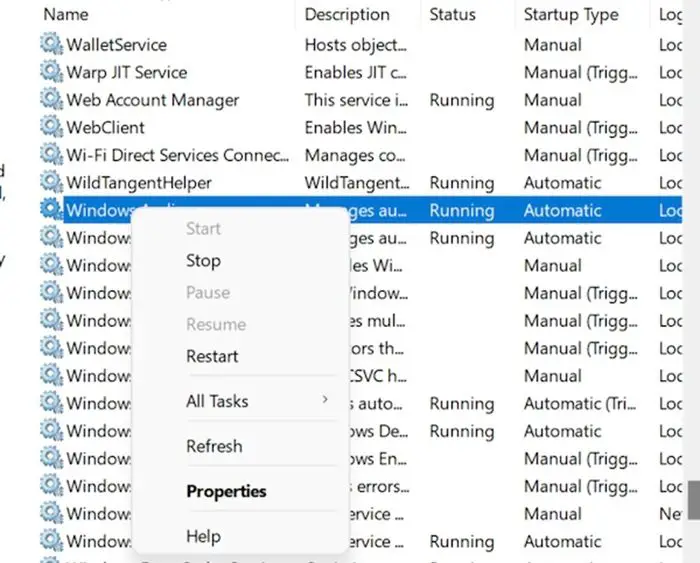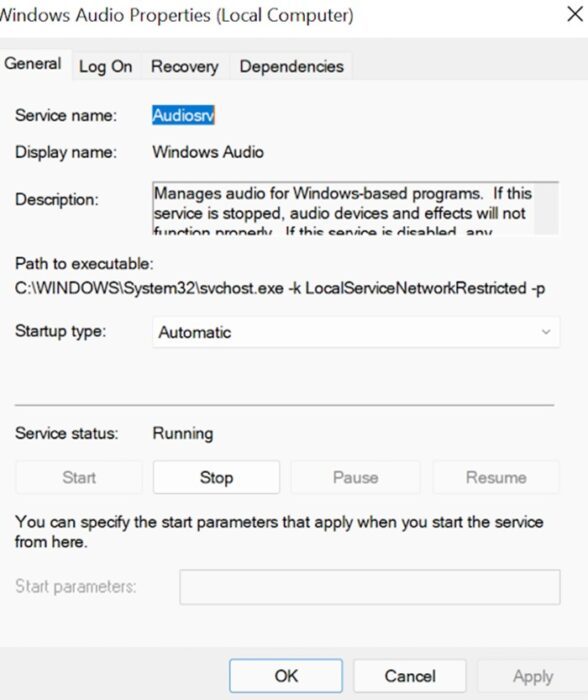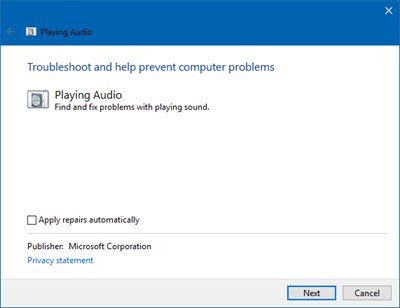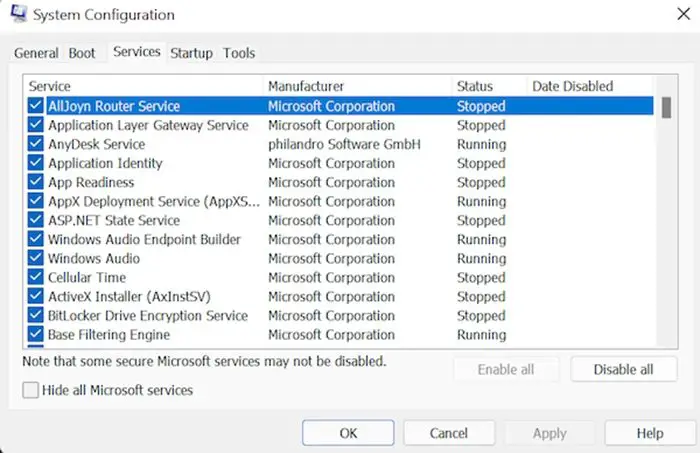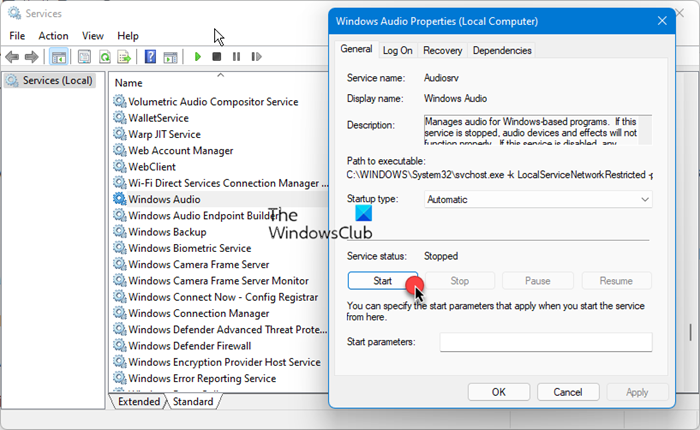Windows Audio Service needs restart
If the Windows Audio Service needs to be restarted manually at login to get the sound back, you can try the following suggestions to fix the issue: Let us look at these solutions in more detail.
1] Check dependencies of the Windows Audio Service
Windows Audio Service manages audio for Windows-based programs. If this service is stopped, audio devices and effects will not function properly. If this service is disabled, any services that explicitly depend on it will fail to start. For it to perform normally, its following Dependencies too should be working normally.
Windows Audio Endpoint Builder ServiceStartup – AutomaticStatus – RunningRemote Procedure Call (RPC)Startup – AutomaticStatus – Running
So ensure that the Service configuration of these two Services is as mentioned.
2] Manually restart Windows Audio Service
Now having checked the Dependencies, you can then restart it manually.
You need to ensure the following configuration:
Windows Audio ServiceStartup – AutomaticStatus – Running
For the same, you can follow the below-mentioned steps:
Press the Win + R key together and then type services.msc in the empty bar and click on Enter.Locate Windows Audio Services in the Service window.Right-click on the Windows Audio Service option and select Restart.Double click on the same service and launch the Properties window.Ensure that the Startup type is set to Automatic.Click on Apply and Ok buttons to save the changes made.
Restart the computer and see if you can play both music and video.
3] Update or Rollback Audio driver
An outdated driver might also be the reason for the Audio Service issue. In such a case, you can update the audio driver to the latest version. Follow one of the methods below to update your device drivers: If you recently updated your Audio driver and then started facing this issue, then you may want to consider a Rollback.
4] Run Audio Troubleshooter
Windows 11/10 already includes Playing Audio Troubleshooter and Recording Audio Troubleshooter, which you can easily invoke via the Control Panel, the Taskbar Search or the Troubleshooters tab of our freeware FixWin. You can also access the Troubleshooters Page in Windows 11/10. Run it and see if that helps.
5] Troubleshoot in Clean Boot State
Perform a Clean Boot:
Open your system as an Administrator. Press the Win + R key together to launch the Run dialogue box.Now type MSConfig and then hit Enter to proceed with the steps.Go to the Services tab, enable the checkbox Hide all Microsoft services and, click on the Disable button.Now, select the Startup tab followed by the Open Task Manager option.Select the program that is creating a nuisance and then click the Disable button. Repeat the step till all the running programs are closed.Once the above task is completed, close the Task Manager. Click on Ok in the System Configuration window.Restart the device.
Once in Clean Boot State, you need to manually locate the offender and then disable or remove that process or program.
We hope this guide helps you. Do let us know in case of any suggestions. Additional help links:
Windows could not start the Windows Audio service on Local ComputerNo Sound in Windows apps like XBOX Music or Video applicationsSound Distortion issues in WindowsTroubleshoot No Video, Audio or Sound in Skype callsHow to enable Mono Audio in Windows.
What is Windows Audio Service?
Windows Audio Service manages the audio device for Windows-based programs. If it stops working, the audio devices and effects will not work properly. If this service is disabled, any service that depends on it will not start.
How do I restart Windows Audio Service?
Do the following to manually restart the Windows Audio Service:
Press the Win + R key together and then type services.msc and click on EnterLocate Windows Audio Services in the Service Manager windowDouble-click on it to open its Properties boxClick on the Start buttonClick Apply and exit.
How do you know if the computer has inbuilt speakers?
You can right-click on the volume icon that is located in the system tray on the right side of the desktop. Select the Playback devices. Click on the Playback tab and see if the speaker is located in the window.
